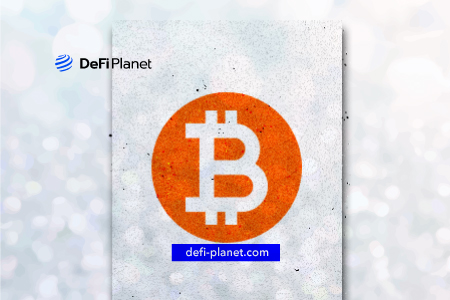Bitcoin is a decentralized digital currency without a central bank or single administrator, which means that its distribution and exchange aren’t controlled or regulated by a government or other authority. Technically, Bitcoin or any cryptocurrency for that matter is very different from traditional fiat currencies i.e., they don’t go through any sort of central payment processor. However, the transactions are processed by a large distributed network of computers running special software.
The following is a simplified breakdown of the Bitcoin whitepaper which was written and released by Satoshi Nakamoto in 2008.
How Bitcoin works
Whenever a transaction happens, the network stores the bitcoin addresses of the sender and receiver, and the amount exchanged. This data is recorded on a blockchain, which is a type of ledger or record. The blockchain is updated hundreds of times each day and delivered to any computer (node) that processes bitcoin. Because each transaction is encrypted using public-key cryptography. Which encrypts and decrypts data to prevent unauthorized access or use and ensures that every machine processing bitcoin is utilizing identical exact copies of the blockchain. This verification process is virtually impossible to forge.
The mining software that operates on a massive processing network works by collecting recent transactions into blocks. The remainder of the network will only accept these blocks if they are hashed correctly.
To add a new block, nodes must first find the appropriate numerical values, this process is time-consuming and compute-intensive. When a machine successfully processes a block, it is added to the blockchain, and the system creates a new bitcoin as a reward, which is then transferred to the miner’s digital wallet.
The system is structured such that processing a block takes roughly 10 minutes. Mining difficulty often rises as more nodes join the network. The expenses of admission into the network are very expensive; in the early days, one could mine on spare computers; later, high-end graphics cards were popular due to their highly parallelized number-crunching optimized architectures. However, it should be noted that this does not typically apply to other cryptocurrencies. At the moment, bitcoin can only be mined economically using specialist mining equipment known as ASIC miners, which can only be used for bitcoin mining in most circumstances and costs quite a bit.
The Bitcoin Network – Transactions, Hashing, and Timestamps
Transactions
Bitcoin transactions are digitally signed with cryptography and are broadcasted to the entire network for verification. Coins are transferred from one owner to the next by digitally signing a hash of the previous transaction and the future owner’s public key and adding them to the end of the coin.
The problem that Satoshi Nakamoto solved in his whitepaper that distinguished bitcoin was the problem of double-spending.The issue with the projects during pre-bitcoin was that the payee had no way of verifying that one of the owners did not double-spend the coin. Double-spending occurs when someone alters the network and inserts a separate block that could allow them to reacquire the particular cryptocurrency.
The solution to this is the introduction of a trusted central authority that checks every transaction for double-spending. The issue with this arrangement is that the fate of the whole monetary system is dependent on the firm in charge of the mint. Furthermore, this defeats the very purpose of attempting to decentralize systems.
The solution developed for the mentioned challenge was for transactions to be publicly disclosed, and for participants to agree on a single history of the order in which they are received. The payee must confirm that the majority of nodes agreed on the initial transaction received at the moment of the transaction.
Hashing
Hashing is a mathematical technique that has been used for decades. A hash can be explained as a large document’s unique digital fingerprint. One can say that a hash is a string of characters that stores the data. To view the saved data, you need to encrypt the hash using your private key. You can hash literally anything: a character, text, document, or webpage with a hashing function. The same input always leads to the same output. But even if you change one bit of the original input, then the hash changes completely. Although, the input can be big or small, a single character or a big file. The length of the hash output is always the same.
Another distinguishing aspect of hashing is that it is irreversible. It’s simple to go from input to output, but it’s nearly impossible to do the opposite. The result of a hash function is commonly referred to as a hash or a fingerprint. After being included in a blockchain transaction, the hash cannot be changed or withdrawn.
Timestamps
When a hash is stored in a blockchain, it is called a timestamp. A timestamp server works by taking a hash of a block of items needing to be time stamped and publishing the hash, where all the members of the node can transparently see it. Each timestamp includes the previous timestamp in its hash, forming a chain, with each additional timestamp reinforcing the ones before it.
The point of a timestamp is that it lets you prove beyond doubt that the content size, the time, of the blockchain transaction hasn’t been changed. A Timestamp can be seen as a certificate of birth for the piece of content.
Proof of Work Mechanism Explained
Satoshi writes in his whitepaper that a proof-of-work mechanism is required to create a distributed timestamp server on a peer-to-peer basis. To put it simply, Proof-of-Work is a consensus method that compels network users to devote time to solving a random mathematical puzzle to prevent anyone from manipulating the system.
This consensus mechanism would be comparable to Adam Back’s Hashcash, which was developed in 1997. The proof-of-work process entails searching for a value that, when hashed, such as using Secure Hashing Algorithm 256 (SHA-256), returns a result of a hash starting with a zero-bit value. SHA-256 generates a Hash that, no matter how long the data string is, produces an output with a length of 256 bits.
Proof-of-work is not based on one-IP-address-one-vote since it can be easily manipulated into allocating multiple IPs, but rather on one-CPU-one-vote. The longest chain represents the majority choice. It is also the one that has received the highest proof-of-work effort.
To change a previous block, an attacker would have to repeat the proof-of-work for that particular block and all subsequent blocks, catching up and surpassing the effort of the honest nodes.
Privacy (pseudo-anonymity)
In the case of a decentralized system, all transactions must be made public. This, however, deviates from the intended objective.
The goal is to maintain privacy while also ensuring that all transaction data is visible to everyone. The solution to this that Satoshi mentions is “by breaking the flow of information in another place”.
Public keys can be kept anonymous, so even if the information for the transactions is revealed and the nodes can see that there has been a transaction between two people. There is no information about whom the particular transaction is linked to.
This has been seen earlier in the case of stock exchanges where there is no data about the identities of the parties made public, but the time and volume of a particular trade are visible to everyone.
Combining and Splitting Value
Under the 9th heading of the Bitcoin whitepaper, Satoshi explains how a single coin can be deconstructed and then reconstructed again.
In order for the value to be split and combined, transactions need to contain multiple inputs and outputs. This is very similar to paper money. When purchasing any commodity, multiple bills can be used to obtain the required amount. Bitcoin operates in a similar manner.
Calculations
This section basically consists of different mathematical models used to calculate the probability of a dishonest node trying to attack the network.
Conclusion
- In the paper Bitcoin: A Peer-to-Peer Electronic Cash System Satoshi introduced a system for electronic transactions without depending on trust.
- The framework for coins before Bitcoin consisted of digital signatures, which did provide strong control of ownership. However, they were unable to solve double-spending problems. Bitcoin was the first significant digital money to eliminate the problem of double-spending.
- Satoshi overcomes the problem of double-spending by proposing a peer-to-peer network that uses proof-of-work to keep a record of the history of transactions that an attacker cannot alter as long as the honest nodes have the majority of hash power.
- The consensus mechanism can be used to impose any rules or incentives that the community deems essential in the system.
If you would like to read more news articles like this, visit our Website. You can also follow DeFi Planet on Twitter, Facebook, Instagram, and LinkedIn.





















